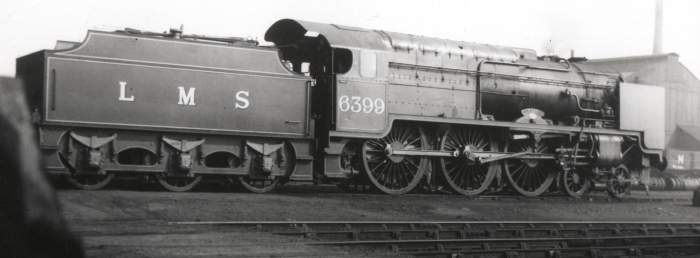The Fury was built on the Schmidt high pressure system. There were three steam circuits:
1) A low pressure (250 psi) "boiler" was fed with water from both live and exhaust steam injectors. From this water was fed by two pumps to:
2) The high-pressure (HP) boiler at 900 psi. Steam from here fed the HP cylinder, and the exhaust from this was combined with superheated steam at 250 psi from the LP boiler, which presumably fed the LP cylinder. Excess steam was passed back to the LP boiler.
3) The super-pressure circuit was closed, its water-tubes making up the firebox walls, and working between 1400 and 1800 psi. It was filled with distilled water to prevent scaling. Its sole function was to transfer heat to the HP steam drum.
 Above: Side elevation of Fury.
Above: Side elevation of Fury.

| Left: The high-pressure drum and the super-pressure water-tubes around the firebox.
|
TIMESCALE.
Dec 1929 Fury handed over to LMS.
6 Feb 1930 Moved to Polmadie
10 Feb 1930 Fatal accident. A burst tube in the super-pressure section kills Mr Schofield of the Super heater Company.
10 July 1932 First dynamometer test run.
14 Feb 1933 Final test run.
| | | | | | | | | |
Fury was rebuilt as a conventional loco No 6170 British Legion.






 Above: Side elevation of Fury.
Above: Side elevation of Fury.




